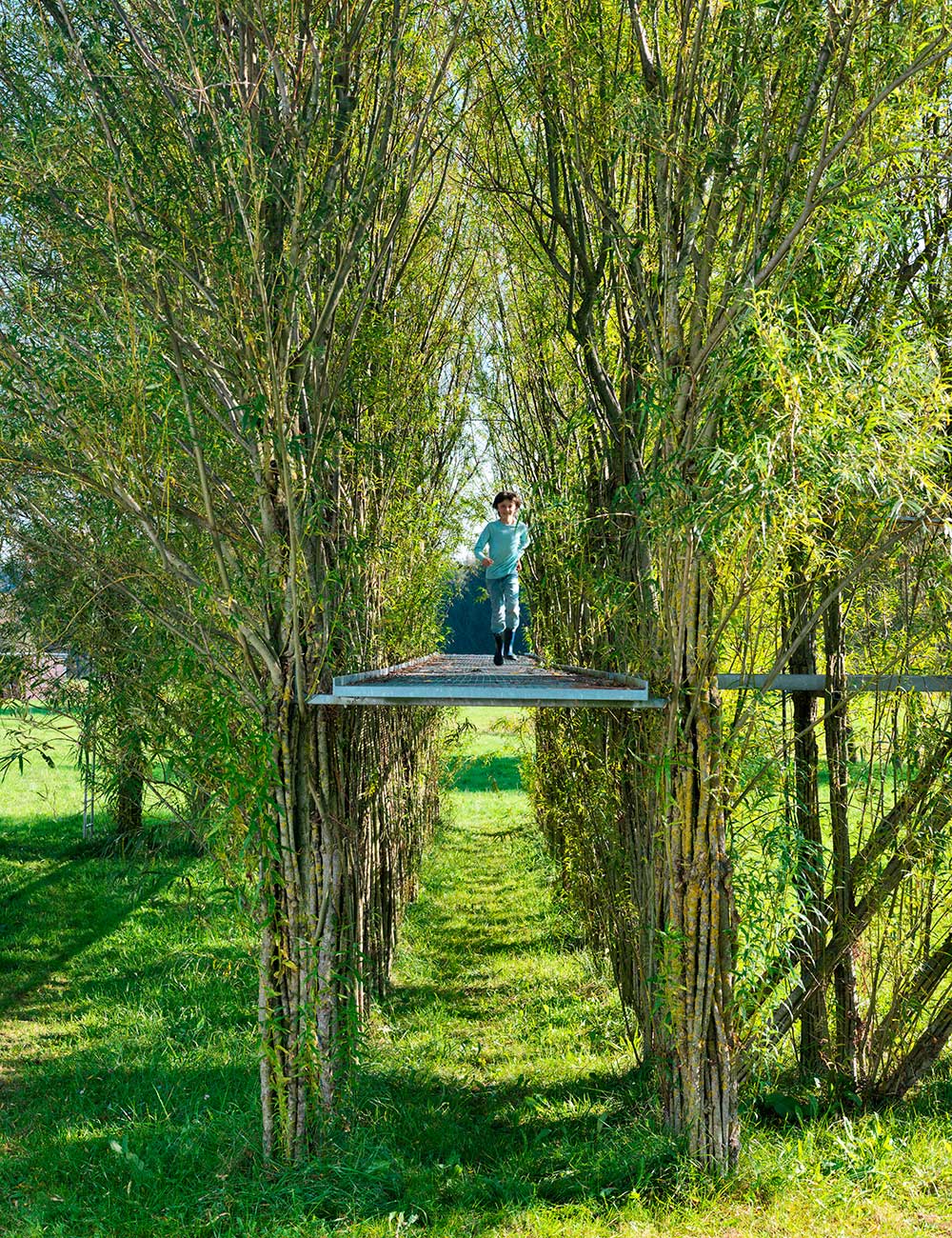Village
The Art of Growing Buildings From Trees
Ferdinand Ludwig dreams of turning cities into inhabitable forests. His research led him to the wettest place on earth, where bridges are made from living trees.
Text — Mark Mann
It’s no coincidence that the planet’s wettest patch of earth is also home to its most unique and durable bridges. Along with the distinction of seeing more rain than anywhere else—as much as 12 metres annually in places—the north Indian state of Meghalaya boasts a contrasting topography of plunging tropical valleys and misty peaks. Countless rivers and streams pour down Meghalaya’s mountainsides, swelling to torrents in the rainy season and carving deep ravines. The region’s inhabitants are eternally occupied with stitching the land back together, one bridge at a time.
The Indigenous Khasi and Jaintia people of Meghalaya have devised an ingenious form of natural infrastructure for crossing their many waterways: bridges made from living tree roots. Intricate yet sturdy, and spanning as far as 50 metres, these hanging catwalks are woven from the dangling aerial roots of the Indian rubber tree, or Ficus elastica.
Families and communities share the work of cultivating these bridges, guiding each new root to the opposite bank and winding them together so that they merge over a period of several decades or more.
While other types of bridges get destroyed by perpetual flooding, or rot or rust in Meghalaya’s humid climate, these root bridges can endure for hundreds of years. Since 2007, the German architect and researcher Ferdinand Ludwig, a professor of green technologies in landscape architecture at the Technical University of Munich (TUM), has been travelling to Meghalaya to study these living root bridges and learn from the people who grow them. Ludwig and fellow researchers Thomas Speck (a botanist at the University of Freiburg) and Wilfrid Middleton (also from the TUM department of architecture) have been composing 3D models of the bridges, compiled from thousands of photographs, in order to better understand how they work.
Ludwig hopes to use those lessons to nurture a new form of botanical architecture called Baubotanik, where plants aren’t just placed inside or on top of buildings, but actually incorporated into their very design.
As fascinating as living root constructions may be, Ludwig and his fellow researchers don’t want to “grow” buildings in the same way the Khasi and Jaintia grow their bridges. Instead, they’re working on directly applying their research to cities, where patience isn’t much of an option and population density is essential, and where the benefits of urban greening—air cooling and filtration, water cycle regulation, oxygenation and decarbonization—are urgently needed. “If we merge the tree and the building, we have both at the same time: a building with a canopy,” explains Ludwig. We might not be able to create a perfect harmony between nature and the built environment, he says, but we can have synergy.
That might sound far-fetched, but Ludwig has already built a full-size proof-of-concept. The Plane-Tree-Cube in Nagold, Germany was assembled from 1200 individual trees (the Platanus acerifolia, or London planetree), stacked in the shape of a box the size of a residential building. The bottom rows are planted directly in the ground, while all the rows above are planted in pots. As the shrubs grow, Ludwig’s team connects their branches to their neighbours, in a process called “inosculation.” Eventually, all the plants connect together to make one large self-sustaining organism that draws all its nutrients and water directly from the ground. So far, the process is 60 percent complete, but eventually, Plane-Tree-Cube will grow into a single large tree, supporting a metal framework that humans climb and stroll around.


Building this way isn’t as slow as the living root bridges, but it still requires vision and patience. Ludwig hopes that we can learn from the bridge-growers of Meghalaya and reframe our cultural relationship to architecture, so we can start thinking about natural processes that never really end. “The Khasi people are thinking beyond their own lifetimes. They’re investing in a future system for their kids.” Eventually, we may start to understand whole cities as living systems.
Perhaps in the future, we’ll call our homes forests.
Never Miss Another Issue
Two issues per year
25% OFF previous issues
Free Shipping in Canada


